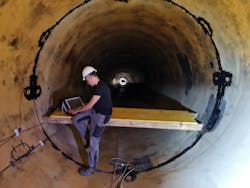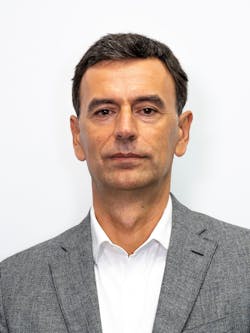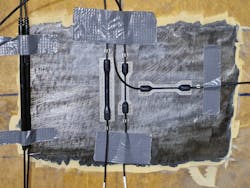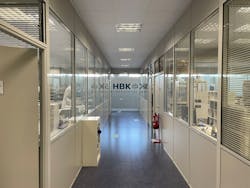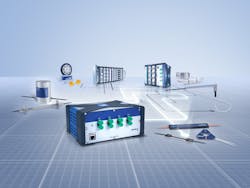Fiber-optic sensing tech strives to move beyond the niche
FiberSensing S.A.
Although for the next 10 years the company was able to grow, from the outset, it was beset by several difficulties. First, as most of the funding was provided by INESC and venture capital firms, Ferreira and colleagues were only allocated a tiny percentage of the shares. Second, the venture capitalists insisted the CEO should come from outside. Three CEOs were subsequently appointed but none of them had the required technical knowledge or level of commitment, and they all left the company after a short time.
When the third CEO resigned in 2011, Ferreira and colleagues gave the majority shareholders an ultimatum: either Ferreira was appointed CEO or the original founders would quit the company. As Ferreira had been director of both engineering and sales and marketing, the majority shareholders agreed and in 2012 Ferreira was appointed CEO and a member of FiberSensing’s Board of Directors.
A third challenge was poor cash flow, which led to the need to apply to just about every tender for European and Portuguese governmental projects to obtain enough money to pay salaries and keep everyone motivated. While these projects were a great benefit financially, it meant focusing on areas not always directly related to developing the company’s products, so not always contributing to growth of the business. A fourth difficulty was that in Portugal venture capitalists were very similar to banks. That is, they provided the money but had little or no understanding of the market or the technology. Additionally, unlike venture capitalists in larger countries that had a number of high-tech companies in their portfolio per technology sector, Portuguese venture capitalists were unable to create synergies between companies, which could bring in business.
As CEO, Ferreira drove FiberSensing forward, getting the right balance between the development of standard products for general test and measurement applications, and products for more specific markets where they could have a role. But by 2014, with FiberSensing looking for a strategic partner, the company agreed to be bought out by HBM Test and Measurement, a leading supplier of test and measurement equipment, which would later merge with B&K to become HBK. For the next six years Ferreira was director of HBM Optical Business, until 2020, when, with the merger of HBM and B&K, he became director of HBK Optical Business.
HBK FiberSensing S.A.
Since the acquisition, all optical activity of HBK is centralized in Portugal at the facilities in Maia, near Porto’s International Airport, with a workforce of 47 people working on optical technology (HBK FiberSensing) and another 31 working in other areas of HBK or of other Spectris OpCos (Spectris Innovation Center).Products
HBK FiberSensing provides the complete measurement chain based on FBG technology, from sensors to interrogators and software. Beyond this, the company also provides installation support and engineering services.
The sensors offered by HBK FiberSensing can measure:
- Linear displacement on different types of structures for monitoring applications, such as sustaining walls, bridge piles, or buildings;
- Static and dynamic strain for stress analysis in smart materials, machines, components, and other types of structural health monitoring applications;
- Temperature in large structures and machines without interference from external noise—ideal for harsh environments;
- Very small angle variations toward the vertical for applications such as sustaining walls, bridge piles, tunnels, or buildings;
- Acceleration at different frequencies for monitoring applications where low frequency, but relevant amplitude vibrations are present, including measuring load-induced vibration of civil structures and ambient cable vibrations.
They also produce static and dynamic interrogators with different form factors, including:
- Multiuse instruments for laboratory or field applications, with real-time acquisition of hundreds of sensors;
- Portable instruments, ideal for field installation and commissioning of sensing networks, or short-term tests;
- Modular unit, part of the HBK QuantumX family, a universal and distributable data-acquisition system.
Applications within five main areas are:
Structural health monitoring. Monitoring of bridges, tunnels, and high buildings; pipeline monitoring for structural integrity; and onshore and offshore monitoring of flare towers and monopiles.
Energy. Vibration monitoring of electrical power generators; hotspot measurements on power transformers; and temperature measurements for battery testing.
Wind. Blade condition monitoring; onshore and offshore monitoring and testing of foundation and structure; integration in systems for individual pitch control; and fatigue and durability testing.
Transportation. Pantograph monitoring and testing; overhead line and pantograph interaction control; and vehicle validation and verification. Also, applications for monitoring ship hulls—e.g., containing liquid hydrogen.
R&D. Embedded strain measurements in composite materials; strain, temperature, and acceleration measurements in cryogenic/high temperature applications (e.g., ITER); and aerospace components testing.
Future challenges
Internal marketing. Although the optical business is fully integrated inside HBK’s product portfolio and all the company’s sales engineers can offer optical products to solve their customers’ measurement problems, there is still a low level of awareness within the company regarding the benefits of optical technology. The tendency inside the company is to see optics as a niche technology and not as the natural choice to solve a test and measurement problem.
As a result, the challenge within the near future is not only to promote their products to external customers but, as importantly, to engage in internal marketing to ensure the entire group is aware of the advantages of optical technology and the products that are available.
As Ferreira points out, it’s also important to overcome a general tendency to undervalue hardware, particularly photonics, and to see software as a panacea for all the world’s problems. But apps need to run on hardware, increasingly photonics-enabled hardware—a fact many people are unaware of.
Technology. Right now, they are still focusing on FBG, and one of Ferreira’s main goals is to strengthen their core optical technology to increase business and consolidate the integration with HBK. But, in the future, other fiber-optic sensing technologies may be introduced into their product range either by acquisition or by establishing new partnerships.
Skills shortage. While it used to be relatively easy to hire engineers, physicists, and people with an optical background in Portugal, it’s much harder today. One of the problems specific to the country is that many multinationals have moved there to take advantage of STEM university leavers and the lower salaries compared with the rest of Europe.
If Ferreira was just starting out now, he says he’d pay more attention earlier to business management in terms of getting additional training or doing an MBA. He’d also be more assertive in forcing the venture capitalists of FiberSensing to choose one of the founders as CEO earlier, because he believes they lost valuable time.
His advice to the next generation of entrepreneurs considering going into photonics is to search for opportunities within the medical sector or optical communications.
Ferreira also says whatever you do, you need to have a dream and belief you will make it a reality. Today, there are virtually unlimited possibilities in the form of university incubators, innovation centers, professors, and other mentors who can guide you in the right direction. The nice thing about pursuing your dreams, he adds, is not just the goal itself, but the experience you gain and the people you get to meet on your journey.
Finally, he encourages persistence and perseverance to try again after you inevitably fail. It’s also important to look at things in a balanced way: if something goes wrong, it’s not the end of the world. If something goes well, don’t get too excited and think you’re going to be a millionaire. In the end, Ferreira says what’s really important is to enjoy your work—because photonics work is really amazing!
About the Author
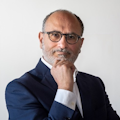
Antonio Raspa
Ultrafast Solid-State Laser Product Manager, Luxinar
Antonio Raspa is ultrafast solid-state laser product manager at Luxinar (Kingston upon Hull, U.K.), and an editorial advisory board member at Laser Focus World. He has more than 35 years of experience with solid-state laser design, photonics components, and fiber optics.
He holds a MSc degree in Electrical Engineering from Politecnico di Milano with a specialization in Quantum Electronics. Before joining Luxinar, he served as senior photonics program manager at the European Photonics Industry Consortium (EPIC; May 2020 – September 2022), preceded by Quanta System (1988-2000) as R&D manager for the development of solid-state laser sources and custom photonics systems for industrial and scientific applications. During this period, he participated, as Ozone LiDAR specialist, to the Italian research program in Antarctica. He then worked at Trumpf (2000-2008) and Rofin-Sinar (2008-2009) as a Product Manager for industrial laser products and processes. In 2009 he returned to Quanta System, organizing and managing a new plant for the production of sterile optical fibers for surgery.
